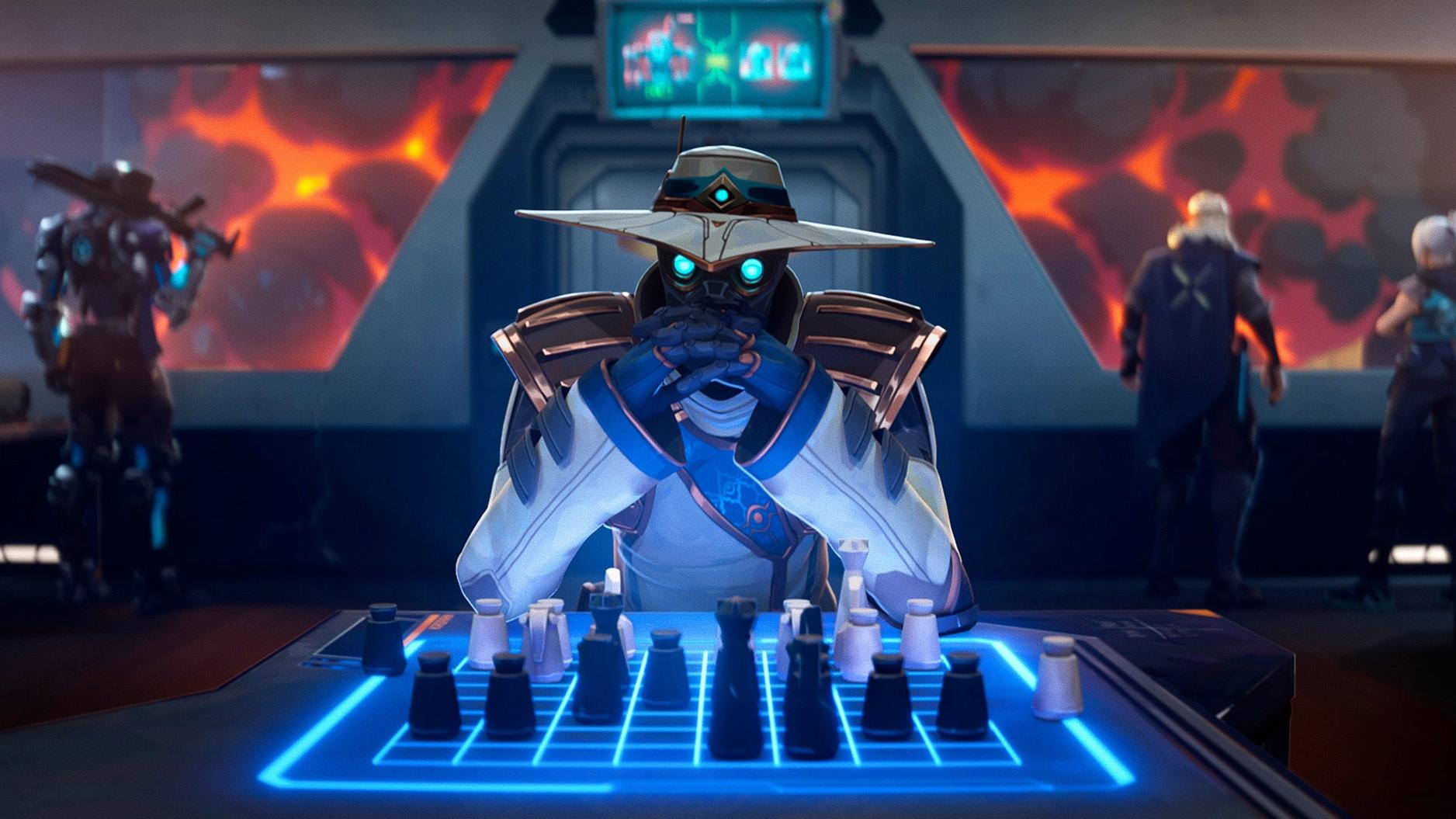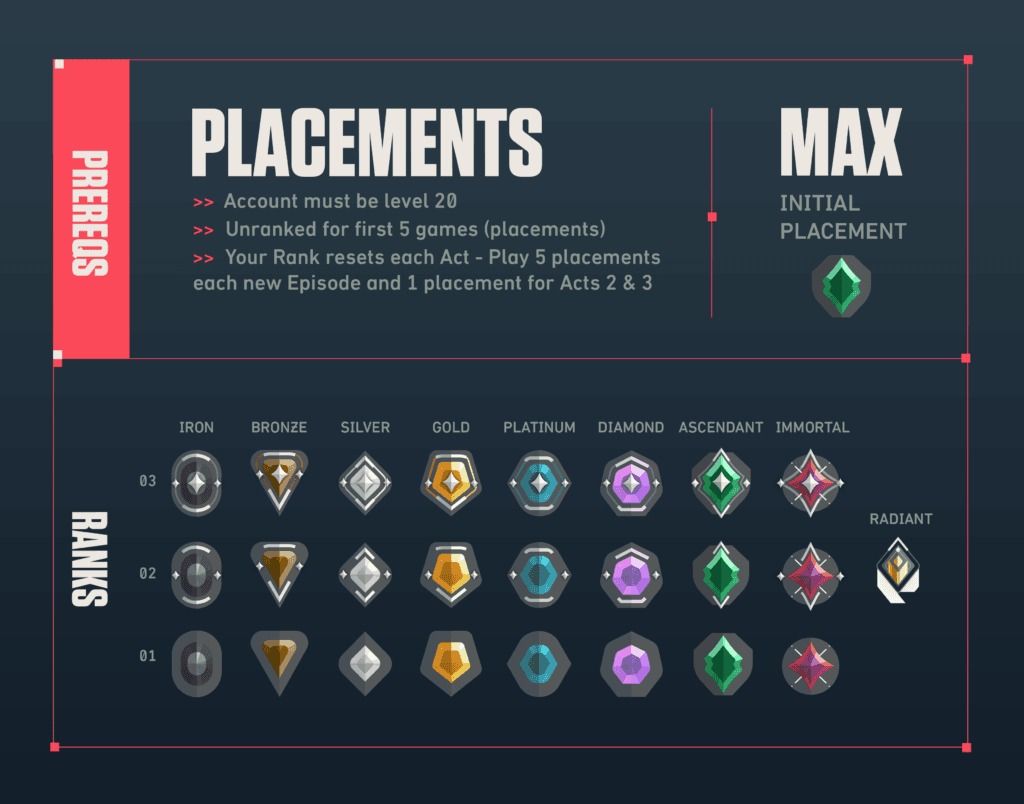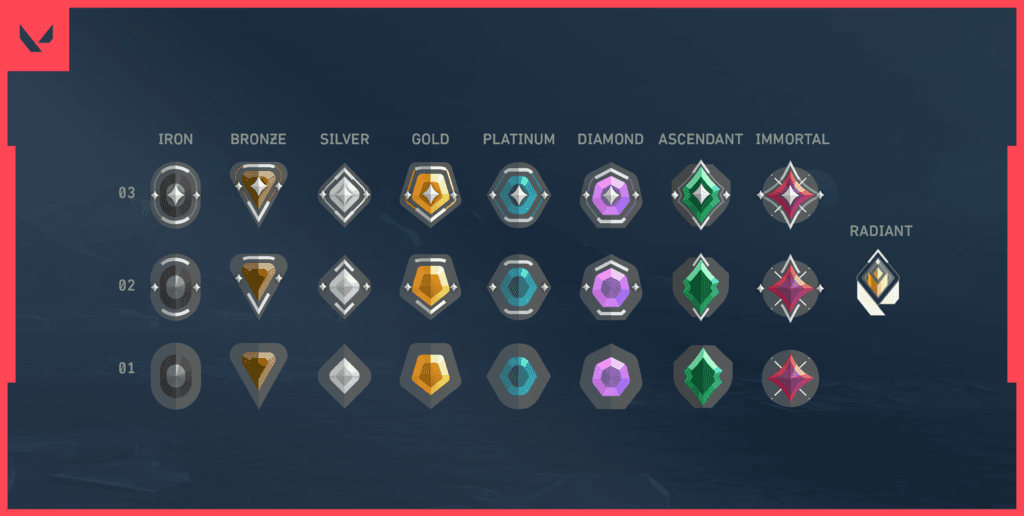
Valorant ranks: How do they work in 2023?
Ranking up in Valorant is no easy feat. There are nine ranks, each with a competitive streak that is not for the faint of the heart. Still, want to play ranked? Then you better know how Valorant ranks work in 2023.
Valorant has taken the gaming world by storm with its unique blend of strategy, teamwork, and fast-paced action. One aspect of the game that piques players’ interest is the competitive ranking system, which is as addictive as its cut-throat. Understanding the Valorant ranking system in depth can help expedite the climb!
How do Valorant ranks work?
The competitive mode features a total of 25 ranks, starting at Iron 1 and culminating at Radiant. Each rank, except for Radiant, has three sub-divisions (e.g., Iron 1, Iron 2, and Iron 3).
Here are all the ranks in Valorant:
- Iron
- Iron 2
- Iron 3
- Bronze 1
- Bronze 2
- Bronze 3
- Silver 1
- Silver 2
- Silver 3
- Gold 1
- Gold 2
- Gold 3
- Platinum 1
- Platinum 2
- Platinum 3
- Diamond 1
- Diamond 2
- Diamond 3
- Immortal 1
- Immortal 2
- Immortal 3
- Radiant
When a player begins their journey in competitive mode, they must first complete a series of placement matches. Once you reach level 20, the ranked mode is unlocked. The outcome of these matches, combined with the player’s previous rank (if applicable), helps determine their initial rank for the new competitive season.

This calibration process happens every new act. At the beginning of a new episode, each player must play five placement games and one placement game at the beginning of the new act to unlock rank. The max rank a player can open with is Ascendant, so if you were Radiant in the last act, you’d still start at Ascendant in a new act.
It is worth noting that a player’s rank is not set in stone; it may increase or decrease based on their performance in subsequent matches, which are analyzed through the MMR system.
Matchmaking Rating (MMR) Explained
Matchmaking Rating, or MMR, is a hidden numerical value representing a player’s skill level. MMR is not visible to the player and is used primarily by the game’s algorithm to match players with opponents of similar skill levels. The underlying principle behind MMR is that a higher MMR indicates a more skilled player, while a lower MMR suggests a less skilled player.
MMR is affected by several factors, including:
- Player’s win/loss ratio
- Individual performance
- The skill level of their opponents
When a player wins a match, their MMR will generally increase while a loss typically results in a decrease. The extent of these changes depends on the MMR difference between the teams involved in the match. For example, defeating a team with a higher average MMR will lead to a more significant increase in a player’s MMR compared to beating a team with a lower average MMR.
MMR is crucial in determining a player’s Rank Rating, the points you gain or lose after each game.
Rank Rating (RR) and its impact on climbing the ranks

Rank Rating, or RR, is a visible numerical value representing a player’s progress toward the next rank. The primary goal of players in competitive mode is to accumulate 100 RR points, which will promote them to the next tier. Conversely, if a player loses enough RR points, they will be demoted to a lower rank.
Each win rewards a maximum of 50 RR to a player (extremely rare, though), but poor performance can also earn you 8 RR despite winning. A player’s MMR heavily influences the amount of RR gained or lost in a match.
If a player has a considerably higher MMR than their current rank, they will earn more RR points per win and lose fewer points per loss. This is designed to help skilled players climb the ranks more quickly, ensuring they reach a rank that accurately reflects their skill level.
On the other hand, if a player’s MMR is lower than their current rank, they will earn fewer RR points per win and lose more points per loss. This can lead to a more challenging climb, as players will need to demonstrate consistent improvement to maintain their rank and progress to higher ranks.
Additionally, individual performance plays a significant role in determining the amount of RR gained or lost in a match. Players who perform well in a match by achieving a high kill/death ratio or contributing to the team’s objectives are likelier to see significant RR gains, while those who perform poorly may experience a more substantial RR loss.
How RR works in ranks above Ascendant
Moving up from Iron through Diamond ranks requires reaching 100RR, but this is not the case for Immortal and Radiant players. In order to advance from Immortal 1 to Immortal two and beyond, players must meet specific regional RR thresholds as they compete against others in their region.
For example, if you’re a player in the NA region, you’ll need to reach 90RR to go from Immortal 1 to Immortal 2. And if you’re a player in the BR region, you’ll need 230RR to go from Immortal 2 to Immortal 3, and so on.
Recommended

Andrew Tate criticized for defending toxicity in Valorant, demanding ban on female players
Andrew Tate is defending a toxic Valorant troll, and gaming community isn’t happy.

Latest Brimstone buff in Valorant patch 8.09 is too good
Brimstone will be great again.

Upcoming Valorant Night Market release date leaked
Start saving up!







